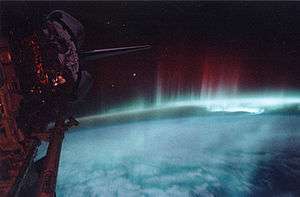Space technology
Space technology is technology developed by space science or the aerospace industry for use in spaceflight, satellites, or space exploration. Space technology includes spacecraft, satellites, space stations, and support infrastructure, equipment, and procedures and space warfare. Space is such a novel environment that attempting to work in it requires new tools and techniques. Many common everyday services such as weather forecasting, remote sensing, GPS systems, satellite television, and some long-distance communications systems critically rely on space infrastructure. Of the sciences, astronomy and Earth science benefit from space technology.[1] New technologies originating with or accelerated by space-related endeavors are often subsequently exploited in other economic activities.
The earth on which we live is a more-or-less spherical planet which orbits a medium-sized star, the Sun.[2] The Earth is one of nine planets which orbit the sun. These planets are Mercury, Venus, Mars, Jupiter, Saturn, Uranus and Neptune. In his 1970 science fiction novel Ringworld, Larry Niven imagined a civilization that created a rotating wheel space within the habitable zone around its star that rotated sufficiently rapidly to maintain artificial gravity. Future space technology may well encompass similar concepts to allow human civilization to expand further into the solar system and beyond.
History of space technology
- History of satellite technology
- Timeline of artificial satellites and space probes
- Timeline of Earth science satellites
- Timeline of artificial satellites and space probes
Future space technologies
References
- Hall, Loura (2015-03-16). "About Us". NASA. Retrieved 2020-06-27.
- "Our Solar System". NASA Solar System Exploration. Retrieved 2020-06-23.
